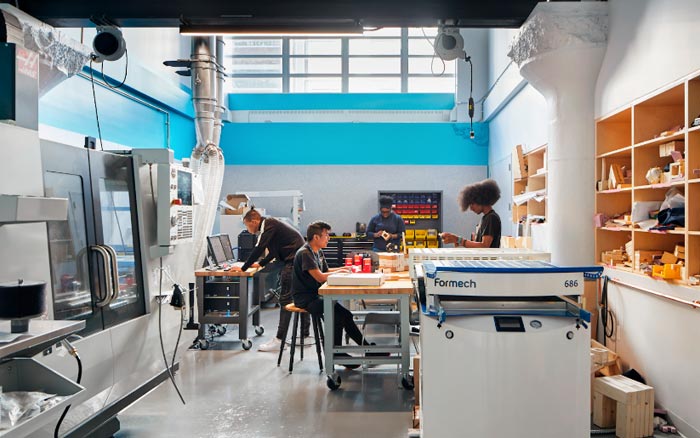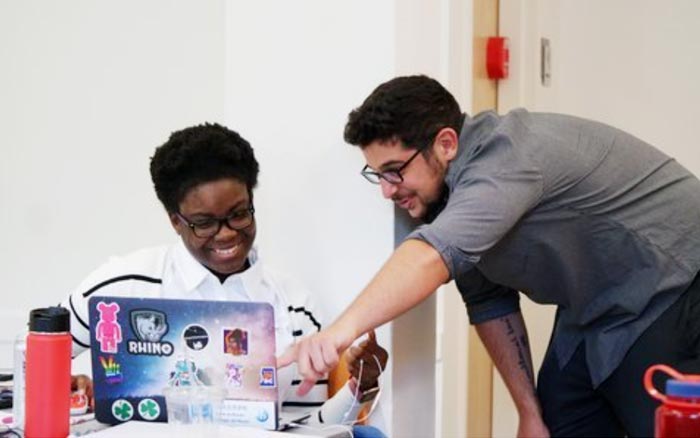
In the past, learning has been largely confined to schools—a single, physical space with a fixed schedule, and teachers who take on all, or most of, the responsibility for educating young people. Learning outside of school has taken place in settings that often cost money, rely heavily on technology, or require a flexible family calendar, making them far more available to those with substantial economic and social capital. Additionally, the learning, creative thinking, and initiative that take place outside of school, such as at home or with communities, often go unnoticed by our current education systems. These patterns persist even though it’s now more possible than ever to learn anywhere, anytime. This calls for schools to redefine themselves so that all young people can learn beyond the walls of the physical school building, valuing the people, contexts, and experiences that play important educational roles in their lives.

Anytime, anywhere learning can help meet the unique needs of learners. It means that learners who need or want to dedicate additional time to a task are able to do so. It also means learners can choose to work at times or in places where they can be most engaged, learn in real-world contexts through hands-on activities, receive additional support, or attend to personal responsibilities. Anytime, anywhere learning also reflects changes taking place in the workplace, including increased independent and remote work. These changes stem from a shifting employment landscape and technological advances for which schools must prepare young people. In many ways, anytime, anywhere learning—and the freedom and responsibility it provides—helps prepare young people for life beyond graduation as it can build their self-directed executive functioning skills, self-concept, self-efficacy, resilience, social and collaborative skills, and more.
This Leap Means…
- Learners and their families engaging in learning when and where it works best for them.
- Learners experiencing adults that are interested in, and value, what they are learning outside of school.
- Learners acquiring and applying skills and knowledge through activities that occur outside the school building.
- Learners interacting with people, other than teachers or school staff, who support their learning in real-world settings.
‘A‘ohe pau ka ‘ike i ka hālau ho‘okahi [All knowledge is not taught in the same school]
M.K. Pukui (Hawaiian proverb)
Examples
Career and Technical Education from Brooklyn STEAM Center (Grades 11–12)
The Brooklyn STEAM Center is a career and technical education model that immerses high-school scholars in industry workplaces where they learn through distinct pathways and real-world, project-based learning experiences. In these industry pathways, learners build career and technical knowledge and skills and have access to industry experts, enabling learning throughout Brooklyn and NYC.

Da Vinci RISE High from Da Vinci Schools (Grades 9–12)
The Da Vinci RISE High model uses a responsive and holistic approach—including flexible scheduling, blended learning, credit recovery, and wraparound social services—to meet the unique needs of learners navigating foster care, housing instability, and other circumstances that have disrupted their schooling. This hybrid learning model, enabled through a digital platform, provides learners the flexibility to learn anywhere and ensures that they meet their academic goals while accommodating out-of-school responsibilities.

Global Online Academy (Grades 9–12)
Global Online Academy brings together teachers and learners from around the world to learn together in high-quality, relationship-based online classes. The model’s intentional design for a global context, incorporating both asynchronous and synchronous learning experiences, creates meaningful opportunities for young people to learn from the perspectives of others who do not share their physical location.

The Modern Classrooms Project (Grades PK–Higher Ed)
The Modern Classrooms Project empowers educators to meet every learner’s needs through its blended, self-paced, mastery-based instructional model. Leveraging teacher-created instructional videos, the model makes class content and materials available for learners to access, complete, and submit from anywhere at any time, suiting their individual needs.


